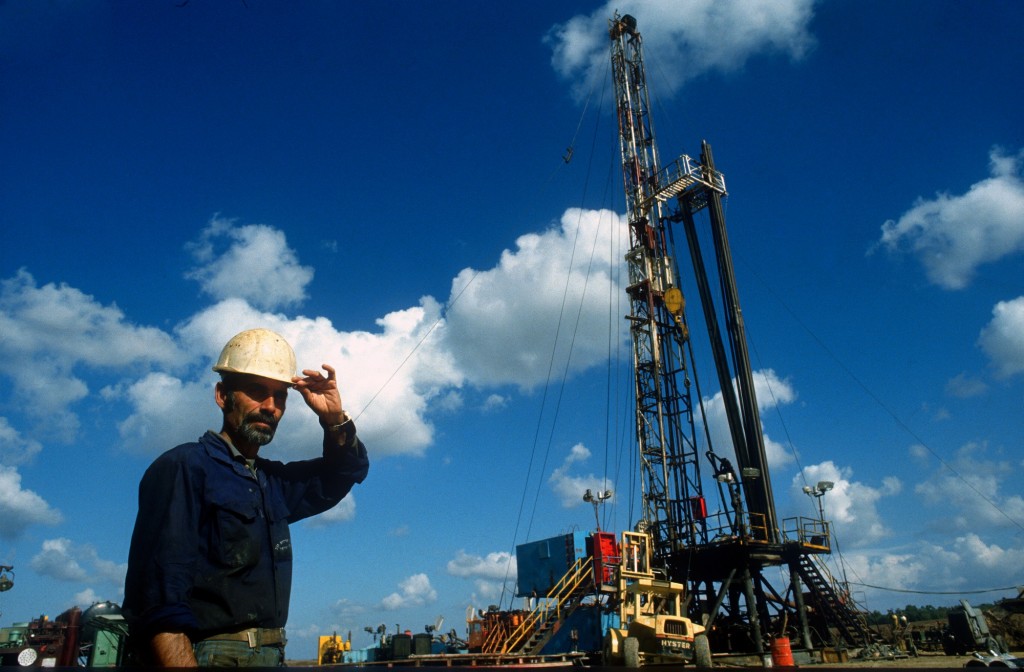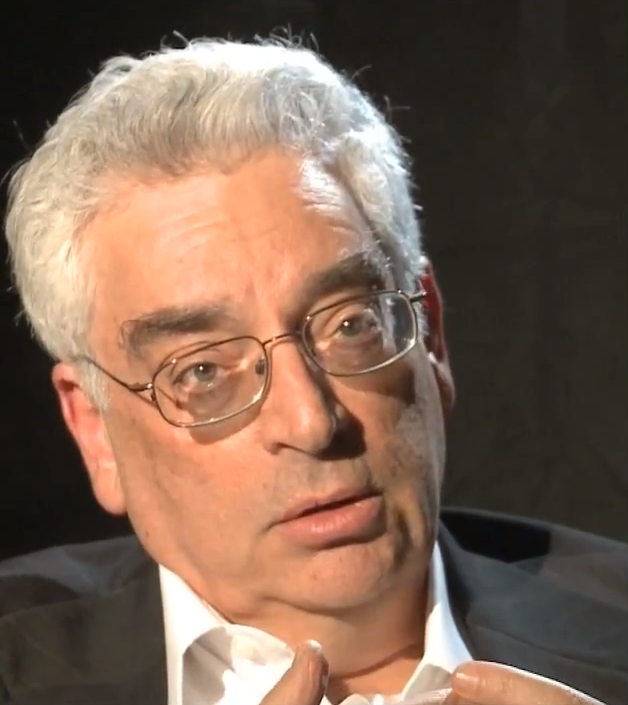While Israel enjoys its recent finds of offshore natural gas, we keep hearing rumors of vast reserves of oil waiting to be tapped. Is that just wishful thinking? Or might the Land of Milk and Honey become the world’s next oil power?
Despite all appearances, the annual OPEC meeting that took place this past May in Vienna was more tense than any of the participants were willing to admit. The headlines coming out of the meeting emphasized consensus and stability, with the cartel agreeing to leave global oil production unchanged. With oil at around $100 per barrel, no one wants to rock the boat. But, as one attendee put it, the facade of calm obscured a matter of “grave concern” for OPEC.
The real story of the OPEC meeting was a tectonic shift taking place in the global energy market. Such shifts have been predicted before, supposedly driven by electric cars, an emerging renaissance of nuclear energy, or one of the alternative fuels du jour. But in the post-Fukushima world, the global appetite for nuclear energy is on the decline; and the demand curve for electric vehicles hasn’t risen as expected. Now, more traditional alternatives have governments in Riyadh, Caracas, and Abuja worried. They are referred to as “unconventionals”: Fuels derived from sources that would once have been technologically impossible to reach or exploit in a cost-effective manner.
The future of energy will be unconventional oil: Not from the Arabian desert but the heartland of the Dakotas, the tar sands of Alberta, and maybe the rocks under the Shfela plain.
They should be worried, because it increasingly looks like the future of energy will be unconventional. It’s a future in which oil will not come from the Arabian desert but the heartland of the Dakotas, the tar sands of Alberta, or 7,000 meters under the waters off the coast of Brazil. It’s a future in which technology and capital are just as important as having huge oil fields. It’s also a future in which once energy-poor countries are poised to challenge those that have traditionally dominated the market. And Israel may hold the keys to one crucial part of it.
This is not because Israel has suddenly discovered vast, easily exploited reserves of oil. It’s because one visionary Israeli company, Israel Energy Initiatives (IEI), is developing a unique technology that could unlock hundreds of billions of barrels of unconventional oil around the world.
South of Jerusalem, deep under the Valley of Elah where, according to the Bible, David slew Goliath, are some of those billions of barrels. Unlike the shale oil extracted by the process famously known as “fracking,” which exists in liquid form trapped inside of rock; the oil beneath the surface of Israel is the rock itself, which must be converted into liquid before being pumped out. This form of hydrocarbons—known in the industry, inconveniently, as oil shale—has not been extracted on a commercial basis anywhere in the world, though it exists in great abundance. Developing a technology that makes the process economically feasible would be a major game-changer, not just for Israel and the Middle East, but for the entire industry.
There are two reasons for this. First, there simply isn’t enough conventional oil to sustain the market in its current state. The theory of “peak oil” appears to have been partially correct. The world seems to have achieved the maximum possible rate of petroleum extraction. Second, there is a staggering amount of oil shale available to anyone who can figure out how to get at it. The World Energy Council estimates that global reserves constitute around 4.8 trillion barrels. That is nearly three and a half times larger than conventional oil reserves. Figuring out how to get at it, however, will require extraordinary technological expertise and billions of dollars in up-front costs and incentives. All of which Israel is uniquely positioned to offer.
IEI is trying to seize the opportunity presented by oil shale, but is also acutely aware of the checkered history of the Israeli energy industry. The search for oil in Israel has been characterized by a mix of poor planning, weak technology, and “bible based drilling,” as IEI management likes to call it. Between 1948 and 1986—when the Israel government finally did away with the Israeli National Oil Company (INOC)—410 wells were dug, none of which yielded any substantial results.
Maybe the best-known is that of Texas oilman Andy SoRelle. In the early 1980’s, he invested $9 million in a vain search for Israeli oil. SoRelle’s odd choice of a location led Jackie Sherman, the Israeli specialist who served as the project’s well-site geologist, to say, “Logically we shouldn’t be anywhere near here. We should have abandoned the well two years ago.… I’m going bloody mad with all these troubles and [SoRelle] is calm as ever.”
Even when Israel found success, things went awry. One of the most promising finds was made off the coast of Ashdod by Occidental Petroleum. But when Armand Hammer, the company’s majority shareholder died, Occidental left with him.
Israel has had far more success with natural gas. The Houston-based company Noble Energy succeeded in discovering the offshore Mari B and Noa gas fields, which have played a major role in turning Israel away from coal as its main source of electricity. More recently, Noble discovered the Tamar field in 2009 and two years later made international headlines with the discovery of the giant Leviathan field. Tamar is already producing and, when Leviathan comes online, it’s highly likely that Israel will become a net exporter of natural gas.
Nonetheless, Israel still remains almost entirely dependent on oil imports, which is problematic for a country which faces as many risks as Israel and has no oil tankers of its own. As recently as the Second Lebanon War in 2006, the country faced a shortage of jet fuel.
Reports in the media often seem to suggest otherwise, however, hinting that Israel is on the verge of the kind of energy revolution America is currently enjoying. Outlets as wide ranging and esteemed as the Harvard International Review, which published a piece on the blessings of Israel’s “shale oil” (which is, as noted above, has it backwards), to a Forbes article that cited a piece in the Commentator promising that Israel is “ready to develop its oil shale,” have contributed to this misperception.
They do have some reason for their enthusiasm, however. The parent company that owns IEI is a New Jersey-based energy company that claims it’s the largest independent residential energy service provider (REP) in New York State, and it has a dream team for an advisory board.
Rupert Murdoch, chairman and CEO of News Corporation, is a member, as is Jacob Rothschild, scion of the world’s most prominent banking family and Israel’s most historically influential philanthropists. Hedge-fund manager Michael Steinhardt, who’s helped send some 300,000 young Jews to Israel with his beloved Birthright charity, brings financial heft to the company. The board is rounded out by two former members of the United States Congress, as well as former Vice President Dick Cheney.
The company is headed by Chairman Efraim “Effi” Eitam, who fought alongside Yoni Netanyahu in the famed 1976 Entebbe operation and later became a senior IDF commander and, then, minister of national infrastructure. CEO Relik Shafir is a trained mathematician and philosopher who participated in the air raid that destroyed Iraq’s Osirak nuclear reactor in 1981. He eventually rose to the rank of brigadier general.
Searching for oil may be one of the easiest things these men have ever done.
But the driving force behind IEI is the company’s chief scientist, Harold Vinegar. He is a giant in the world of energy extraction and production. For 32 years, he worked for Royal Dutch Shell, and is the world’s leading expert on oil shale. With 268 patents to his name, Vinegar might be the most capable person on the planet when it comes to extracting hydrocarbons from shale rock and turning them into crude oil.
In 2008, Vinegar retired from Shell and moved to Israel with his wife and son. “My goal was to teach at Ben Gurion University,” he says, “to train a new generation of Israeli petroleum engineers and also explore for oil and gas and oil shale in Israel.” He teamed up with up with Yuval Bartov, IEI’s chief geologist, whom he met years before when they worked together in Colorado, where some of the world’s largest deposits of oil shale are located.
“Israel has some of the best source rock in the world,” Vinegar says. He is referring to rock that lies some 300 meters beneath the Shfela region, just south of Route 35 in the northern Negev desert. In 2008, IEI was granted a research, development, and demonstration license to perform survey drilling in the 90 square-mile area known as the Shfela Basin. Five years later, IEI believes that the Shfela has resources equal to 100 billion barrels of oil, of which the area covered by their license contains 40 billion barrels. This is enough to supply Israel’s energy needs for over three centuries.
The challenge, however, lies in the fact that, unlike shale oil, which already exists in liquid form, oil shale is solid. In other words, it isn’t actually oil yet. It’s rock that has to be turned into oil before it can be extracted. “It’s more appropriate to refer to this as immature oil,” says Deborah Gordon, a senior associate at the Carnegie Endowment for International Peace’s energy and climate program. In order to liquefy Israel’s oil shale, IEI has to “accelerate time,” artificially inducing a process that, in nature, takes millions of years.
Put simply, this process requires extremely high temperatures. Oil is formed by the very slow effect of pressure and heat on organic remains. Seventy million years ago, the Shfela basin was covered by the Tethys Ocean. The skeletal remains of small sea creatures that sank into the seabed were eventually covered by sedimentary rock and, over millions of years, turned into solid organic matter called kerogen. Had this rock been buried thousands of feet deeper, where temperatures are much higher (between 158 and 338 degrees Fahrenheit), it would ultimately have turned into liquid crude.
In order to turn solid kerogen into liquid, IEI has to artificially accomplish what the earth did not have time to do: Melt the kerogen through a process known as retorting. This can be done either above ground (ex situ) or below (in situ). Ex situ retorting has been done successfully on a commercial basis and is currently being done in Estonia. In situ retorting has yet to be made commercially viable. Vinegar hopes to change this.
Vinegar has developed a process that requires heating the kerogen to temperatures of around 300 degrees Celsius by drilling heating wells into the oil shale. A smaller number of production wells are also strategically placed in the heating pattern. Because liquid is lighter than rock, the high temperatures bring the lighter liquid to the surface while the heavier rock remains below.
Using this process, IEI hopes that, by 2024, Israel will be able to produce 50,000 barrels a day for 25 years. In order to achieve this, the company must first begin its pilot project, which is expected to start in 2014. The company has submitted an environmental impact study to the Environmental Protection Ministry, and upon its approval, which IEI believes it will receive, the three-year pilot will commence. During that time, IEI expects to produce only a miniscule amount of oil—between 2-5 barrels a day, around 500 barrels in total. If and when the National Planning and Building Committee approves further drilling, a demonstration phase will commence, which will produce around 2,000 barrels a day between 2016 and 2019. IEI hopes that commercial drilling will begin by 2024.
IEI’s plan is a national security advisor’s fantasy. It could provide Israel with a domestic source of high quality crude oil; erode the influence of OPEC, which is made up almost exclusively of countries that are vociferously anti-Israel; improve Israel’s trade balance; and develop a technology that can be used by countries with large oil shale reserves around the world. But, as is often the case in Israel, getting there will be very complicated.
The most visible, though not the most challenging, problem is public opposition. According to Relik Shafir, environmentalist groups have two serious objections to the project. The first is “a concern among the green agenda that more oil supply will impede their efforts to finance projects.” Naturally, he says, this is a difficult argument to make in public. So environmentalists tend to concentrate on the second objection: the environmental risks associated with oil shale development.
The most serious environmental concern is one that is also faced by fracking projects in the US. Environmentalists argue that pollutants from oil shale rock may permeate below-ground aquifers and contaminate the water supply. IEI holds that degrading the integrity of underground aquifers is unlikely, mainly because of the impermeable, 200-meter thick rock layer that separates the oil shale deposits from the aquifer below the Shfela Basin. No doubt, the company will need to prove this during the pilot phase of the project.
But IEI will also need to confront the notorious “not in my backyard” factor, as well as the concerns of various stakeholders in the Shfela valley, including agricultural interests. Shafir says that this is one of the most important issues for IEI and will influence where the final project is conducted.
There are other questions as well: How much water will be required in this process? How much energy will be required to extract each barrel of oil? What infrastructure will be required to transport the oil to refineries? Will all the oil produced be high quality crude? What are the other potential side effects of oil shale extraction?
The economics are also uncertain. IEI believes that oil shale production can cost about $40 per barrel—which, if true, would make it especially attractive at a time when oil is selling at around $100 per barrel. Yet the high cost of oil shale technology —what’s been called “the dark side of the golden age of shale”—combined with the volatility of future oil prices makes the question more uncertain than it may sound. At the same time, all attempts to develop and commercialize new technologies involve uncertainty. What is important is to calibrate one’s expectations with reality.
Is Israel poised to become the next energy superpower, a Saudi Arabia of the Levant? The short answer is no, at least not in the near future. Despite the breathless media reports, the process of developing oil shale as a viable alternative to conventional oil is still in its infancy. But it is important to remember that Israel is a country that has survived by making the nearly impossible possible. Should it succeed again in doing so with oil shale technology, it could lead to enormous changes not only for Israel but the entire world.
![]()
Banner Photo: Shay Levy / Flash90








